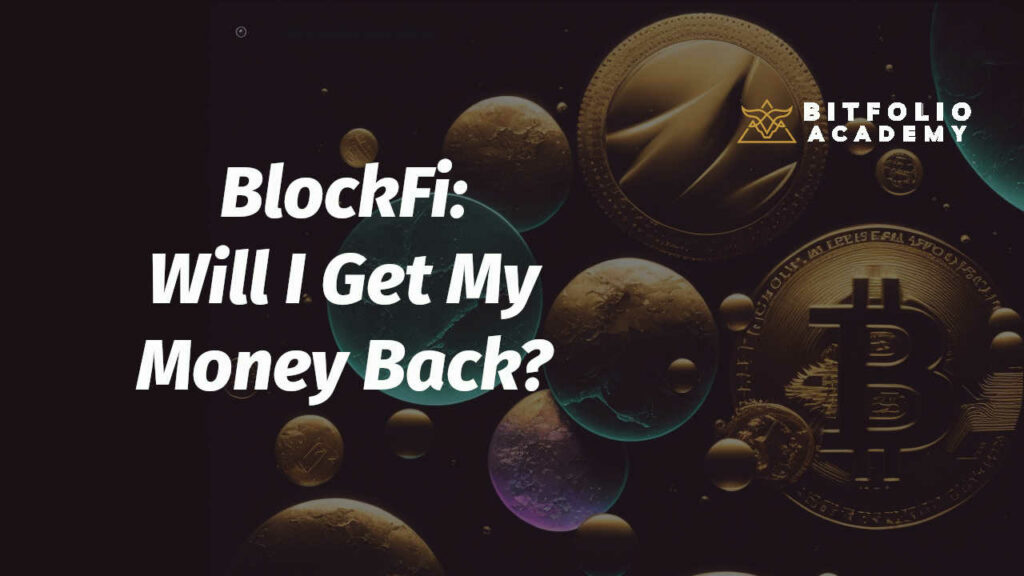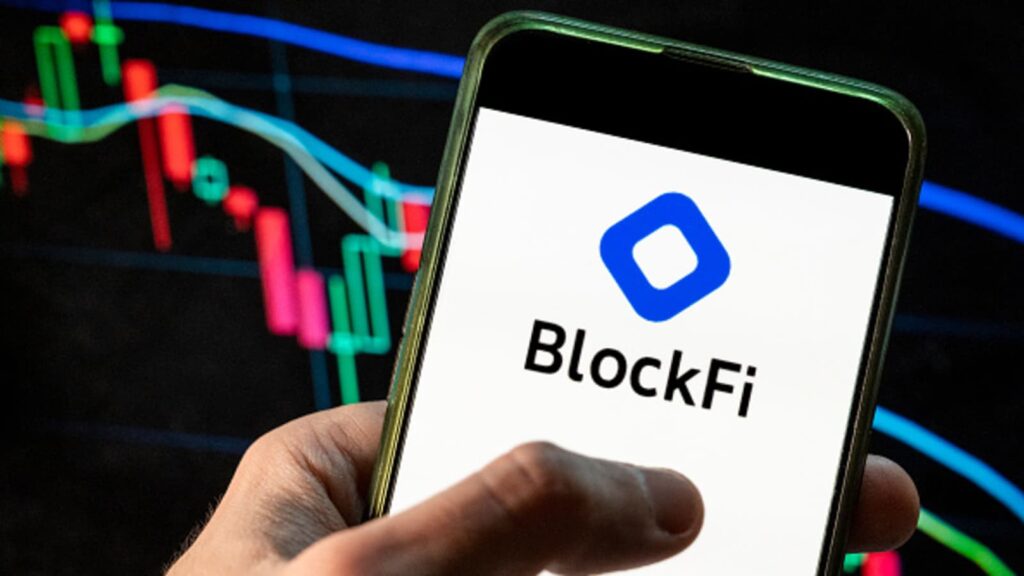If you’re an investor who has money or crypto assets deposited with BlockFi, you may be wondering what will happen to your funds following the company’s chapter 11 bankruptcy filing in November 2022. In this article, we’ll break down what this means for you and what steps you can take to protect your investments.

BlockFi Files for Bankruptcy: What It Means for Investors
“We believe that entering into chapter 11 is the best path forward for all of our stakeholders, including our customers and investors,” said Zac Prince, the CEO of BlockFi Lending LLC.
BlockFi, the popular crypto lending platform that allows investors to earn interest on their crypto holdings and BlockFi rewards, filed for chapter 11 bankruptcy in November 2022. The company decided that filing for bankruptcy was the best course of action to keep the company from going out of business.
Key Points
BlockFi’s bankruptcy filing will certainly impact investors who have money or crypto assets deposited with BlockFi. As an investor, it’s important to understand the potential impact of BlockFi’s bankruptcy filing on your funds. In the following sections, we’ll discuss what this means for BlockFi Inc. customers and what steps you can take to protect your investments.
BlockFi and FTX Bankruptcy Filings
BlockFi filed for Chapter 11 bankruptcy in November 2022, citing one of its largest creditors, FTX, as the reason for the bankruptcy. Here are some details about the events that led up to the filing and how it differs from other recent crypto bankruptcies:
- FTX, which is listed as BlockFi’s #2 creditor after a substantial bailout earlier this year, declared bankruptcy, causing BlockFi to file for bankruptcy as well.
- This interconnectedness of crypto lending platforms was highlighted as the bankruptcy of one of BlockFi’s creditors led to its own bankruptcy filing.
- BlockFi’s business is based on crypto assets, and its revenue is directly linked to the value of these assets. When the crypto market plummeted in 2022, BlockFi’s revenues suffered, and the company’s financial problems began.
- To mitigate the impact of the “crypto winter,” BlockFi opened a $400 million credit line with FTX. As part of the deal, FTX had the option to buy out BlockFi for $240 million, but this option was never exercised.
- The credit line was viewed as a safety net thrown by one of the most dominant and stable crypto firms in the industry. However, it was only a stopgap, and BlockFi also had to lay off about 20% of its workforce, reduce executive compensation, and slow new hiring.
- BlockFi’s bankruptcy differs from other recent crypto bankruptcies in that it was not caused by a hack or theft of crypto assets, but rather by financial problems resulting from a market downturn.
Despite the bankruptcy filing, BlockFi has stated that it intends to return investors’ assets and funds. However, the process may be complicated, and investors may need to take certain steps to ensure that they are able to retrieve their money.
How BlockFi’s bankruptcy differs from Celsius Network’s bankruptcy
BlockFi’s bankruptcy differs from other recent crypto bankruptcies in terms of the ownership of users’ crypto assets. Unlike Celsius Network, BlockFi’s terms of service state that the cryptocurrency held in a user’s BlockFi Wallet always belongs to the user and does not transfer to BlockFi (despite being in a BlockFi interest account). This means that in the event of bankruptcy, users may have a better chance of getting their crypto assets back since they retain ownership. On the other hand, Celsius Network’s terms of service state that users’ deposits (into the earn product) belong to Celsius and that depositors are creditors, which may complicate matters for users in the event of bankruptcy. This difference in ownership structure highlights the importance of reading and understanding the terms of service of any crypto lending or investment platform before depositing funds or assets.
What It Means for Depositors
Investors who have deposited money or crypto assets with BlockFi may be concerned about what the bankruptcy filing means for their investments. Here are some things to consider:
- BlockFi has expressed its intent to seek authority to honor certain client withdrawal requests. This means that investors may still be able to withdraw their funds, although there will be limitations and delays.
- The goal, according to one of BlockFi’s proposed financial advisors, is for clients to “ultimately recover a substantial portion of their investments.” However, there is no guarantee that investors will receive all (or even a substantial amount) of their funds back.
- BlockFi has claimed to have around $257 million in cash on hand to support the bankruptcy proceedings.
- It is important for investors to keep in mind that bankruptcy proceedings can be lengthy and complex, and the outcome may not be immediately clear. It is possible that investors may have to wait months or even years to receive any funds back.
What It Means for BlockFi Borrowers
Customers who use BlockFi for lending or borrowing crypto assets may also be wondering how the bankruptcy filing will affect them. Here are some key points:
- BlockFi has suspended liquidations due to insufficient deposits.
- Customers should also be aware that withdrawals will remain frozen or deposits will be halted during the bankruptcy proceedings.
- BlockFi has expressed its intent to continue day-to-day operations as the restructuring process proceeds. This means that customers will still be able to access their accounts.
- However, there may be changes to BlockFi’s services in the future. As part of its bankruptcy plan, the company is looking to reduce expenses, which could include cutting staff and possibly reducing some of its services.
What Can BlockFi Customers Do?
- BlockFi customers will have to wait for rulings from the court to get access to their funds. Customers should keep in mind that the bankruptcy process can take a long time, so they need to be patient.
- Customers should closely monitor BlockFi’s announcements.
- Customers should stay updated on the company’s progress in bankruptcy court to see if and when their withdrawals will be honored.
What Comes Next?
- BlockFi’s bankruptcy case is expected to take months or even years to resolve. The company is expected to appear in bankruptcy court to start hammering out early plans, and it has hired counsel to aid the process.
- The impact of BlockFi’s bankruptcy on the wider crypto market remains to be seen. However, it has highlighted concerns about the stability of the crypto industry and the need for consistent regulations and consumer protections.
- It is possible that other crypto lending platforms may face regulatory scrutiny, especially as the industry continues to grow and attract more investors.
How to Store Crypto Assets Safely
As a result of the recent bankruptcies from CeFi (or Centralized Finance) including BlockFi, Celsius Network, and Voyager Digital, one of the painful lessons learned is “not your keys, not your crypto.” Learn to self custody your crypto assets and learn to use Defi for earning yield on your crypto assets. Bitfolio Academy offers a free class on DeFi yield farming, which is included in your Bitfolio free membership.
Storing your crypto assets safely is critical to avoiding the risk of losing them in the event of a crypto platform’s bankruptcy. Here are some tips to help you protect your digital assets:
- Use a Hardware Wallet: Hardware wallets, such as Ledger or Trezor, are devices that store your private keys offline, making them one of the safest ways to store your crypto assets. They offer a high level of security against hacking attacks, as they require physical access to the device to make transactions.
- Keep Your Private Keys Safe: Your private keys are like the passwords to your crypto wallet, and you should keep them safe and never share them with anyone. One of the best ways to keep your private keys safe is to write them down on a piece of paper and store them in a secure location, like a safe deposit box.
- Use Multi-Factor Authentication: Multi-factor authentication adds an extra layer of security to your account by requiring a code sent to your phone or email in addition to your password. This can help prevent unauthorized access to your account.
- Be Careful with Online Wallets: Online wallets are convenient, but they are also more vulnerable to hacking attacks. Your computer system must be kept free of viruses and code that could compromise your online wallet. If you must use an online wallet, make sure you have proper security measures in place.
- Stay Informed: Finally, stay informed about best practices, and don’t be afraid to ask for help if you’re unsure about something. Please download my free PDF guide: “How to avoid scams and rug pulls.”

Bottom Line
Investors should be aware of the risks associated with investing in crypto CeFi lending and borrowing platforms. Here are the key takeaways from this article:
- BlockFi’s bankruptcy highlights the risks of investing in crypto-based lenders and banks.
- Regulations in the crypto industry are patchy and inconsistent, leading to inadequate liquidity levels and a lack of consumer protections.
- Customers of CeFi crypto platforms are often the ones shouldering the brunt of losses in the event of bankruptcy or insolvency.
- Investors should consider self-custody of crypto assets, and using a hardware wallet, which stores private keys offline and away from potential cyber threats.
- Going forward, investors should be cautious when investing in CeFi crypto lending and borrowing platforms and carefully consider the risks involved. My recommendation is to use DeFi to earn a yield on your crypto assets.
- As the crypto industry continues to evolve, it is important for investors to stay informed and cautious. By understanding the risks and taking necessary precautions, investors can navigate the industry with greater confidence and minimize their exposure to potential losses.

About the Author
David Anderson is a seasoned cryptocurrency expert with over a decade of experience in the industry. As a systems and software engineer, David’s journey into the world of cryptocurrency began when he discovered a hacker mining Worldcoin on one of his servers in 2013. Since then, he has been actively involved in the mining, trading, and investing of digital assets, and has coached many others in the field. David’s passion for technology and his desire to get in early on technologies that will impact the future led him to become a certified Blockchain Solution Architect in 2021. Join David in the Bitfolio Academy Coaching Community and learn from his wealth of knowledge and experience in the exciting world of cryptocurrency investing. For classes or coaching, contact him via his website, https://en.bitfolio.biz
